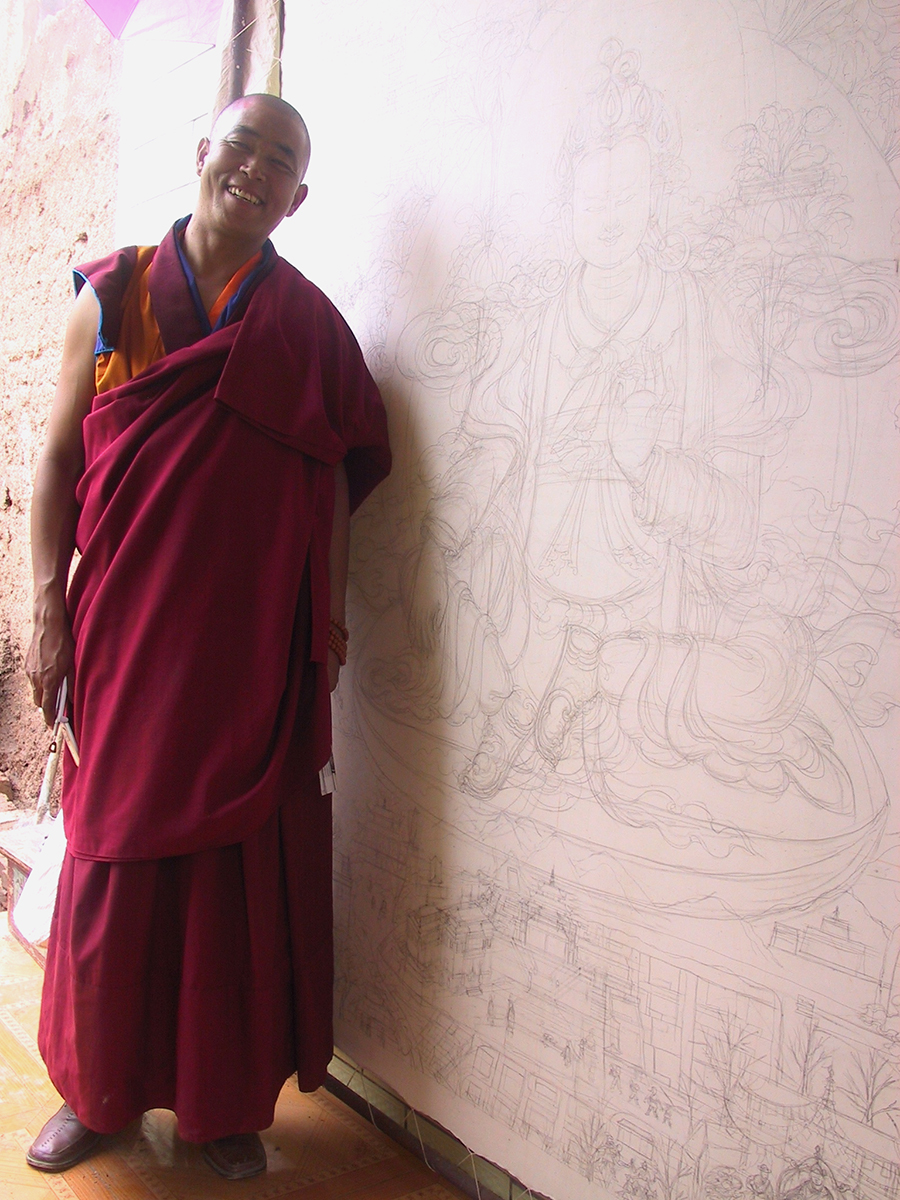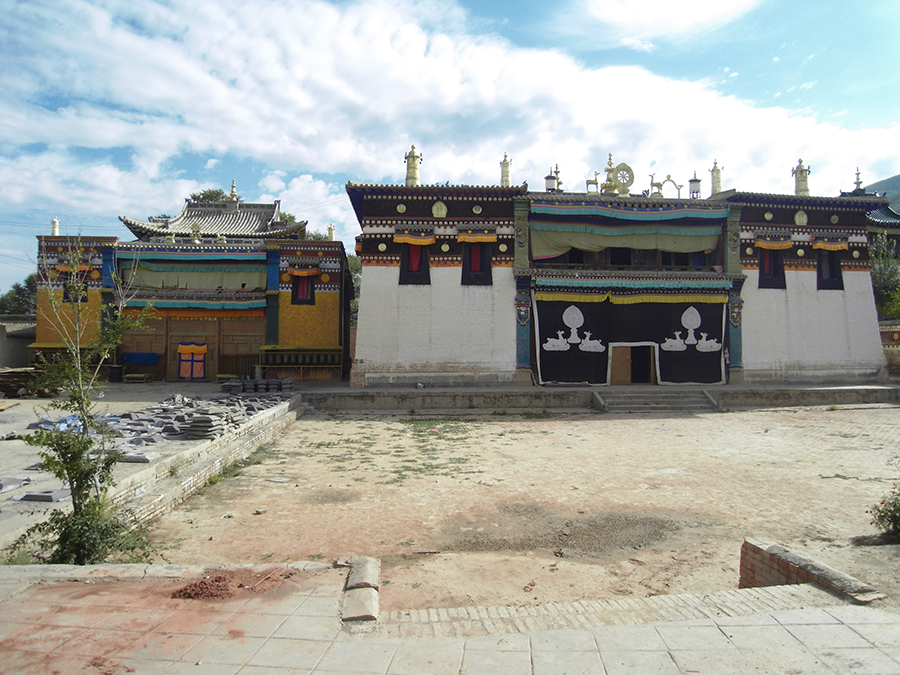Sarah Elizabeth Fraser
The Role of Tibetan Artists in Forging the Modern in Chinese Art
Art-historical canons are, by definition, fixed and typically finite; they are secure and reliable storehouses of stable visible material and accompanying data that scholars in a particular field agree are the most representative objects to serve as goalposts and markers of essential terrain. Sometimes those canons are adjusted at critical moments in history. One such moment in modern East Asian painting occurred during the Second Sino-Japanese War (1937–1945). The transformation of accepted pillars of Chinese painting is the subject of my study.

Dge ’dun dar rgyas (Gengdeng Daji), Underdrawing, King Trisong Detsen (r. 755–794), 2004, pencil and ink on canvas. Photo: Sarah Elizabeth Fraser
During this era (contemporaneous with World War II in the Pacific), artists from metropolitan centers migrated to remote regions in southwest and northwest China. East Asian painters also traveled to India, creating a transcultural, pan-Asian moment in modern art. Wall painting of the 5th through 13th centuries often occupied these artists as they endeavored to create meaningful, modern interpretations during a period of trauma and deracination. At this time, war’s shadow greatly impacted mobility. Within the Republic of China, artists followed the government’s evacuation from coastal cities and moved westward. This physical displacement is sometimes characterized as an internal exile; we can also describe it as an intellectual retreat with a focus on early art and folk techniques to buttress wartime cultural nationalism. Interest in medieval Buddhist workshops further expanded the canon to include archaeological materials and works without known (famous) painters. An index to this shift is a collaboration between a well-known Han Chinese artist, Zhang Daqian (1899–1983), and five Tibetan painters from the Rebgong area in Qinghai Province––a region known for its brilliant artistic legacy. Together they copied murals at Dunhuang area cave sites from 1941 to 1943. In this study, I explore the ways in which the superior skill of Tibetan monastic artists is deployed to reclaim ancient artistic knowledge, and the ways in which it is recast as Han Chinese. Also at stake is the reception of a “high-low” Tibetan-Han collaboration in shaping mainstream painting discourse of the mid-20th century, which I addressed in an earlier study.

Sûtra Lecture Hall, Seng ge gshong ya mgo Monastery (Upper Temple Village), Rebgong, Qinghai Province, 2007. Photo: Sarah Elizabeth Fraser
Tibetan alterity was leveraged as a critical avenue to explore lost Han Chinese artistic knowledge of medieval murals. The response to this transcultural collaboration to reclaim ancient northwest murals was resoundingly enthusiastic in the wartime capital of Chongqing. Yet, extensive challenges exist in writing a balanced history of modern Chinese painting “on the margins.” Data collection in A mdo––the Sino-Tibetan region that occupies parts of Qinghai and Gansu Provinces in the northwest––is not straightforward due to the extensive erasure of temple material culture during the Cultural Revolution. Widespread destruction and the lack of available canonical writings requires methodological versatility. Collecting oral histories, conducting artist visits, and cataloging artistic techniques are critical to reconstructing tangible and intangible cultural heritage. Through these encounters, one “finds” history when no history seems to exist, especially in a canonical art-historical framework. These methods seem straightforward; yet in the case of artistic production, a technical history is embedded in making. That is, when the visual record is unavailable, present production is a link to the past and provides a fuller picture of the canon.
One such example is a painting that recounts the origin tale of the village Seng ge gshong ya mgo, home to the five painters who collaborated with Zhang Daqian in the 1940s. The son of Sha bo Tshe ring (1922–2004) displays a large canvas delineating the village’s history as far back as the Tang dynasty (618–907), when Tibetan armies settled in this region during the eighth century. The painting narrates a local lineage, placing it within greater Tibet and the Gelug tradition; the Potala Palace (upper left) and Tashilhunpo Monastery anchor the depiction of village life (bottom center). The modest sutra lecture and image halls that dominate village architecture and social gatherings have place of pride below the Tibetan king in the draft painting. Rebgong history endures through the copying and remaking of local history pictorially, even if its place in the canon has yet to be secured.
Universität Heidelberg
Beinecke Visiting Senior Fellow, March–April 2024
Sarah Elizabeth Fraser returns to her position as professor and head of the Institut für Kunstgeschichte Ostasiens, Centre for Asian and Transcultural Studies, Universität Heidelberg. In late 2024, she will be the editor of the Archives of Asian Art, published by Duke University Press.
